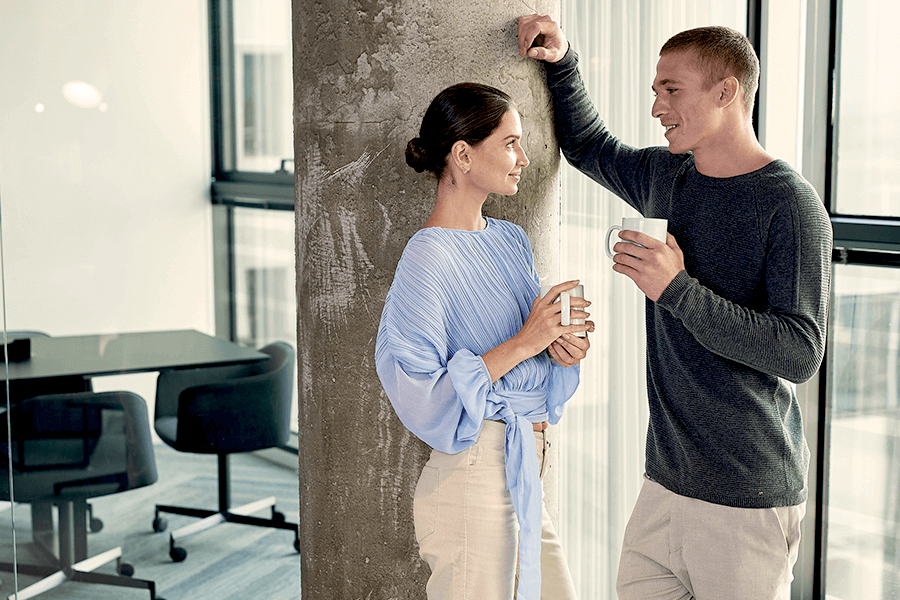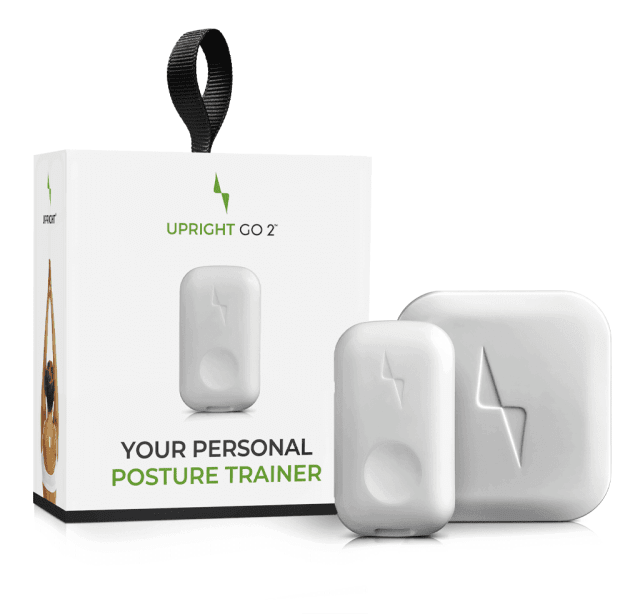What Does Good Posture Look Like?
Max Frenkel

We all know a sloucher when we see one, but what does someone with good posture look like?
Every day, we engage in various activities without giving due consideration to the way we hold our bodies. We bend, squat, twist, and lean like we’re animated superheroes, exempt from the laws of gravity. However, unlike Elastigirl from The Incredibles, we do not possess superhuman elasticity and are susceptible to back pain and injury. That’s why it’s necessary to respect our physical limitations and understand that for every activity, there is an appropriate body position.
In this article, we’ll explore what good posture looks like when sitting, standing, and moving.
Get the perfect posture for every situation with the UPRIGHT GO 2 smart posture trainer.
Why posture matters
An upright body is a happy body. Correct posture keeps your bones and joints in place, enabling your muscles to function more efficiently. This helps your body conserve energy, so you’re less likely to experience muscle fatigue. Proper body alignment is also your best defense against arthritis as it reduces wear and tear on the surface of your joints.
Happiest of all body parts is your back. Practicing good posture is one of the most effective ways to prevent backache and muscular pain. It keeps your spine from getting locked in unnatural positions and eases the strain on your spinal ligaments. Take note all you contortionists out there!
What does good sitting posture look like?
Activities don’t necessarily have to be strenuous to require good posture. Even sedentary states like sitting and sleeping can put your bones and ligaments out of alignment if you’re not careful. When sitting for prolonged periods, try to keep your back straight, shoulders back, and butt against the back of your seat. Use a rolled-up towel or lumbar support to help maintain the natural curves of your spine. Bend your knees 90 degrees, keeping them level with, or slightly higher than, your hips. If necessary, use a footrest to raise your feet; otherwise, place them flat on the floor. Do not cross your legs as this causes uneven weight distribution on your hips.
Here’s a quick method to ensure you have correct sitting posture:
- Sit with your butt at the edge of your chair and slouch all the way forward.
- Now, sit upright and accentuate the curve of your back as far as possible. Hold for a few seconds.
- Release the position by about 10 degrees.
If you spend most of your day sitting behind a desk, make sure you’re familiar with our 5 Tips for Better Posture in the Office.
When it comes to driving, you’ll want to get into a position that supports the curve of your back. Bring your seat close enough to the steering wheel so that your knees are bent and level with your hips. Your feet should be able to easily reach the pedals. For additional support, place a lumbar roll in the small of your back.

We recommend changing position every 30 minutes so your body doesn’t start to adapt to a seated posture.
What does good standing posture look like?

There’s more to standing than simply being upright. Here are a few tips on holding yourself tall and proud:
- Keep your feet shoulder-width apart and extend your thigh muscles taking care not to lock your knees. Shift most of your body weight onto the balls of your feet rather than your heels. To check that your weight is evenly distributed, ask someone to gently push on your sternum. If your weight is where it should be, you’ll be able to maintain your balance.
- Allow a slight curve in your lower spine, but try not to over-arch or lean back, particularly when standing for long periods.
- Raise your chest while lowering your shoulder blades to create distance between your rib cage and hip bone.
- Relax your jaw muscles so that your chin is level.
- To ensure that you have correct standing posture, you can perform a simple wall test.
What does good moving posture look like?

Of all the different ways we move our bodies, lifting objects in a safe and controlled manner is perhaps the most challenging. In general, it’s better to avoid lifting items that weigh more than 30 pounds, no matter how strong you think you are.
To pick up an object off the floor
Keep your back straight and bend with your knees and hips. Resist the temptation to bend forward at the waist! Stand close to the object you’re about to pick up with your feet wide apart and firmly planted on the ground. Squeeze your abs and let your leg muscles take most of the load. Slowly straighten your knees as you bring the object up to your body in a smooth, controlled motion. Stand fully upright, keeping your back straight, and take small steps forward. Avoid lifting heavy objects above waist height.
To pick up an object off the table
Slide the object to the edge of the table so you can hold it close to your body. Bend your knees and arms as you lift the item and slowly stand up straight. As above, tighten your stomach muscles to reinforce your core as you lift.
The bottom line
In this article, we’ve learned what good posture looks like in its various forms. Now, it’s time to put that knowledge into practice and start building posture habits that last.
Put your money where your slouch is! Buy an UPRIGHT GO 2 today and keep your body in perfect alignment at all times.
You Might also Like
Search
Sign up to our newsletter
Follow Us On
Popular
Revisit the GO 2/S Device Setup
How to get started
Finding your upright position
How to find your target upright posture
Calibration
Check out the UPRIGHT GO 2

